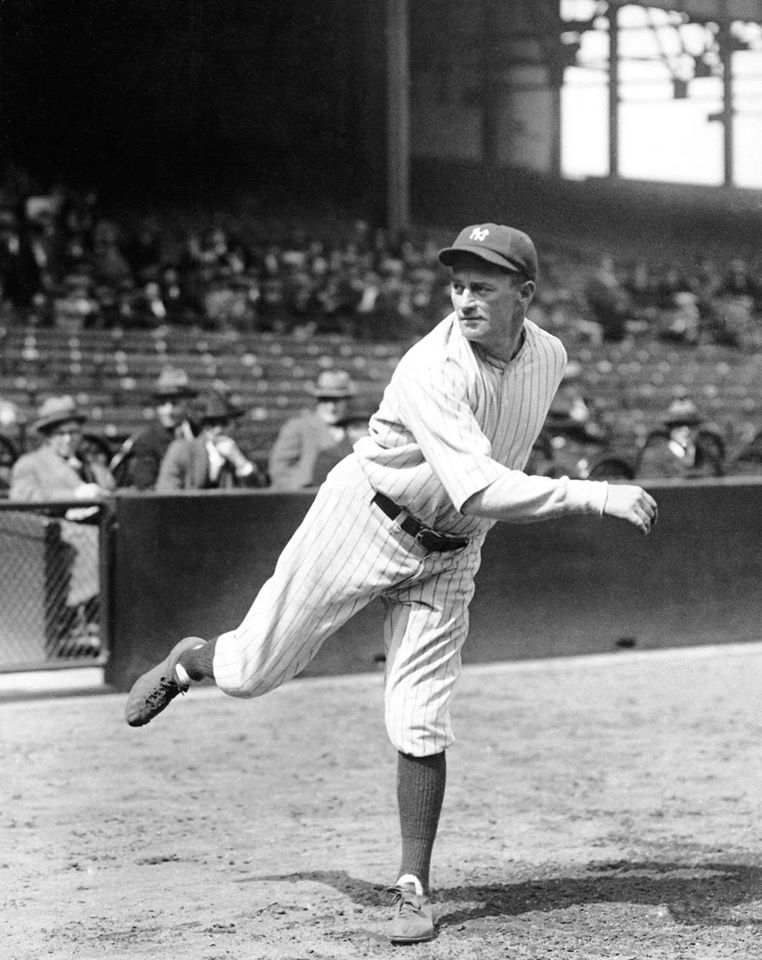Scroll Down to Read Today’s Essay
Subscribe to Baseball History Comes Alive for automatic updates. As a Free Bonus, you’ll get access to my Special Report: Gary’s Handy Dandy World Series Reference Guide!
Urban Shocker Photo Gallery
Let’s File This One Under:
“My, How The Game of Baseball Has Changed!”
The St. Louis Browns Urban Shocker Pitches Two Complete Games — In the Same Day!
One hundred years ago yesterday, on September 6, 1924, something very unusual occurred. St. Louis Browns right-hander Urban Shocker started both ends of a doubleheader against the White Sox at Comiskey Park. That was unusual enough in itself. But what made it even more noteworthy was that Shocker turned in two complete games! In our era of pitch counts and six-inning “quality starts,” I think we can safely conclude that this will never happen again.
But there is even more: Shocker had been the major league strikeout leader in 1922, but in this twin bill — although he faced 77 batters giving up a combined nine hits — he only struck out one batter! And both games ended in identical scores of 6-2, with the Browns winning both games.
It’s always fun to look through the box score from games played long ago, looking for interesting little tidbits of information. I found that the most notable players in the games were two future Hall of Famers: George Sisler, the player-manager for the Browns (who gave Shocker the double start assignment); and Eddie Collins for the White Sox.
In an era known for great baseball nicknames, I found these players: “Babydoll” Jacobsen, “Bibb” Falk, and “Sloppy” Thurston. The umpires were Red Ormsley; Bill Dineen, who had pitched for Boston in the first World Series in 1903; and Pants Rowland, who had previously managed the White Sox to the 1917 World Series championship.
The Browns went on to finish fourth with a 74-78-1 record; while the White Sox — still feeling the effects of the 1919 Black Sox Scandal — finished last (66-87-1) under three different managers: Johnny Evers (51-72-1) Ed Walsh (1-2), and Eddie Collins (14-13).
The outstanding career of Urban Shocker
On January 22, 1918, the Yankees traded the talented young right-hander to the Browns for a washed-up Eddie Plank and infielder Del Pratt. Yankee manager Miller Huggins engineered the deal and it was one he surely came to regret. Although they did get three decent years out of Pratt, Eddie Plank never pitched a game for the Yankees. After this lopsided trade, Urban Shocker quickly developed into one of the most dominant pitchers in the American League and became one of the greatest Browns’ pitchers in their history.
Over his seven seasons with the Browns, all Shocker did was go 126-80 (.612) with a 3.19 ERA. To make matters worse from the Yankees’ point of view, he posted four straight years with 20 or more wins from 1920 to 1923. Over this period, he went a stellar 91-51 (.640), with a 3.16 ERA. His 27 wins in 1921 led the American League, as did his 149 strikeouts in 1922. At his retirement, he was the Browns’ all-time leader in career wins and shutouts. As one of the last pitchers to legally throw the spitball, it’s hard to imagine how good the Yankees of the early 1920s would have been had this deal not been made.
Back to the Yankees
Then on December 17, 1924, the Yankees tried to atone for the terrible trade. Shocker returned to the Yankees in exchange for Bullet Joe Bush and two other pitchers. While not as dominant as he was with the Browns, he still had some good years left, going 19-11 in 1926, and 18-6 in 1927. Overall, in his six seasons with the Yankees, he went 61-37 (.622) with a 3.14 ERA.
Unfortunately, Shocker developed a heart condition early in life. Due to its severity, some reports said he had to sleep either sitting or standing up. By the early fall of 1927, he was too ill to maintain his spot in the Yankee rotation. After his release in 1928, he contracted pneumonia and passed away shortly after on September 9, 1928, aged 37 as the result of heart failure exacerbated by the disease.
Gary Livacari
Photo Credits: All from Google search
Information: Excerpts edited from the book: “St Louis Browns: The Story of a Beloved Team”; Steve Steinberg’s biography, Urban Shocker, Silent Hero of Baseball’s Golden Age; and excerpts edited from Urban Shocker Wikipedia page
Click on the green “Follow Us” icon below to subscribe to our website, Baseball History Comes Alive to receive email updates of new essays as they are published. Our site has over 1500 fully categorized baseball essays and photo galleries, now surpassing the one million hits mark with over 1,232,000 hits

